Building a large partitioned Jewellery Box
I acquired a board of Laos Rosewood with what I think is a nice grain figure, and I wanted to make sure that whatever I build with it displays this figure prominently. Because of the position and size of this grain figure on the board I decided to build a large partitioned jewellery box which displays the figure on the front. So the carcass of the box was to be made of this rosewood and for the lid I had a nice piece of White Ash which was the perfect size so I went with that since its white colour contrasts nicely with the reddish rosewood.
I wanted to use finger joints (or box joints) to construct the box because of the strength the joint provides, but also because I get to use my Triton FJA300 Finger Joint jig again, so I set the jig up on my router table and routed out the fingers on all four sides at once. I then dry fitted the joints together to make sure everything fits and then glued it all up making sure the box is square.
Next I started work on the interior of the jewellery box. I put a plywood base in and built a four partition compartment out of some poplar. I wanted the partitions to be removable so that the box’s owner can change the compartment size based on their needs. I did this by making three equally spaced removable dividers which can be easily slid in and out of the grooves in the sidewall of the box. I gave these three divider pieces a rounded profile so they look good and I did that on my bandsaw and sanded the curve smooth on my Triton TSP S450 Spindle Sander.
The next step was to make the lid for this jewellery box. I used a solid piece of White Ash for this and routed a groove all around the bottom of the lid so that it sits snuggly inside the box and can’t accidently slip off. I wanted the lid to have the shape of a raised panel so I scored lines on the top of the lid which define the raised portion, and then cut the angled portions to these lines with my table saw. I had to build a raised fence for my table saw to be able to perform these cuts accurately and safely. Without the custom fence the lid would probably have tilted during the cutting process and I would have messed up the cut. The tall fence keeps the lid square to the table saw table and therefore keeps the cut straight and accurate.
Next I started work on the inside tray which sits on top of the four partitions. I designed this tray to be half the length of the box so that it can be slid from side to side and all the below partitions would be accessible without having to lift it out. The tray carcass was made of poplar to keep it lightweight and the base is thin plywood. For the handle however, I decided to go with a piece of the rosewood to make it stand out a little.
The last step to building this box was to make a handle for the lid and to make four feet for the corners of the box. The handle was made from the left over rosewood and glued to the ash lid using a hidden dowel to give it more strength. I went for a curved shape on the handle because I think it breaks up the straight look of the box a little and looks a bit more appealing. The four feet were made from left over pieces of ash and glued on to the bottom of the box.
The box was finished with a few coats Watco of Danish Oil for protection and left to cure for a few days.
For more pictures of the finished jewellery box check out the photo gallery.

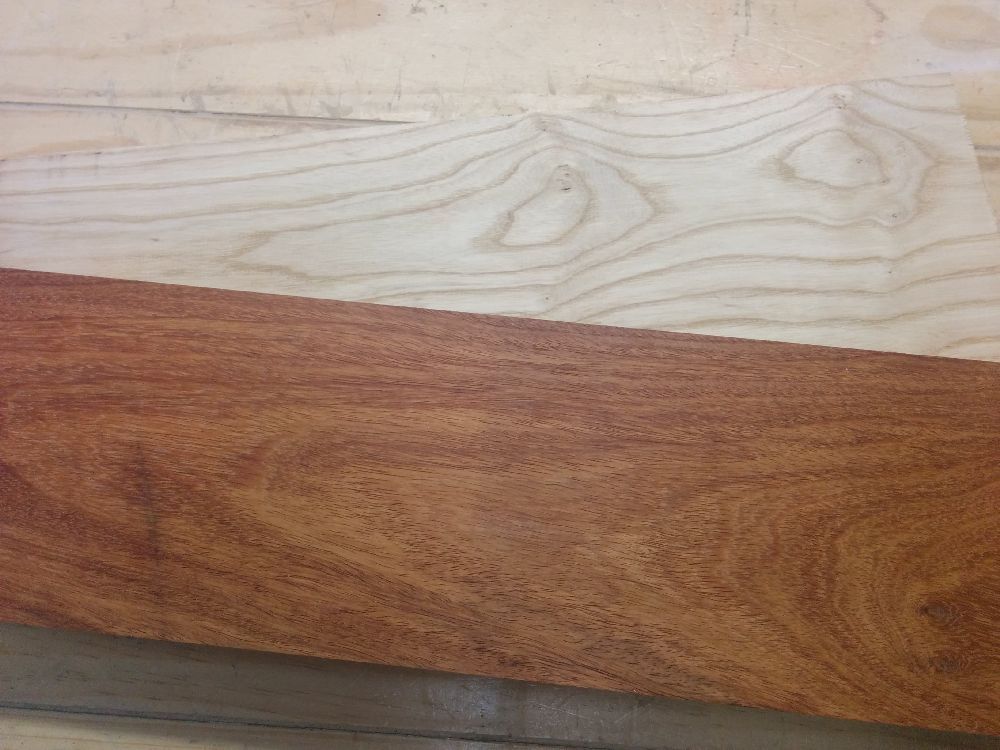
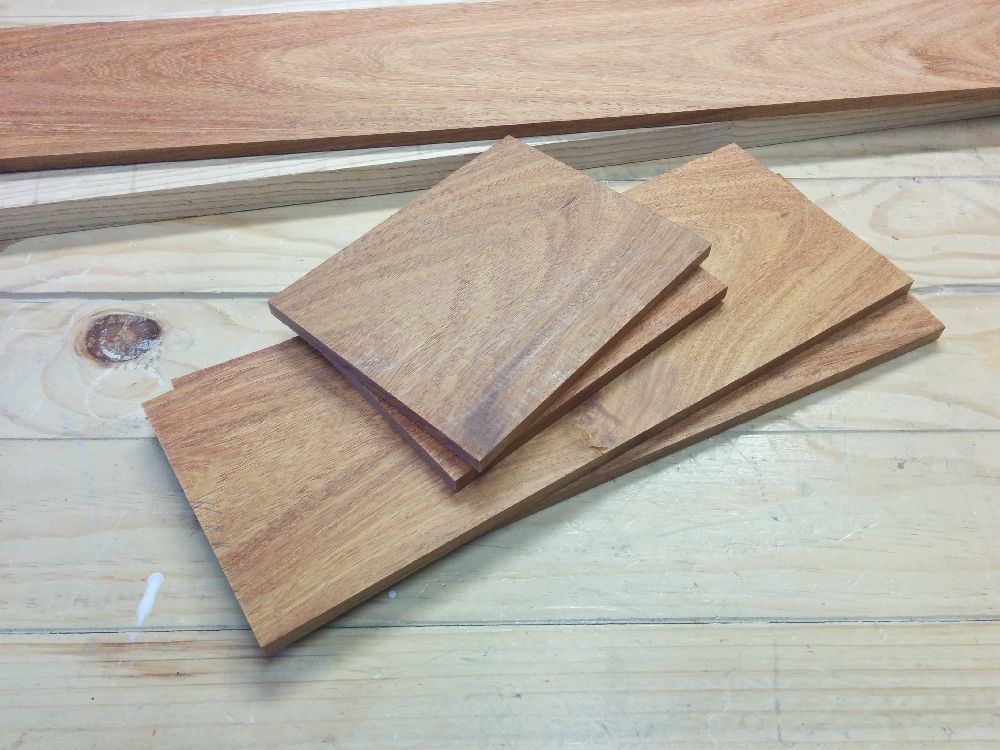
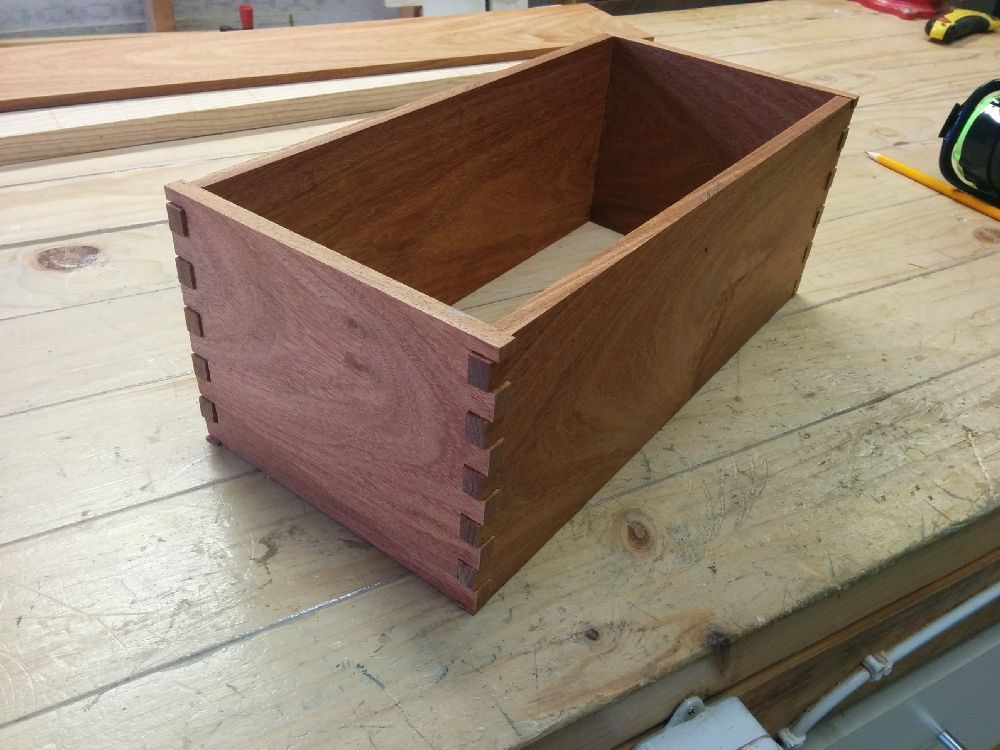
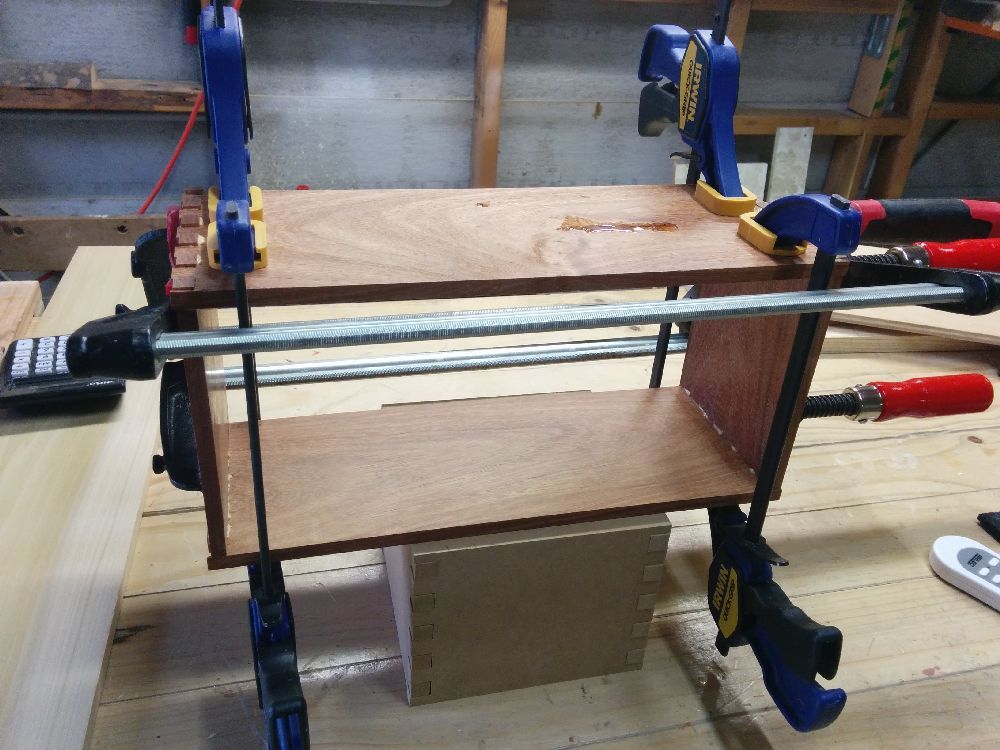
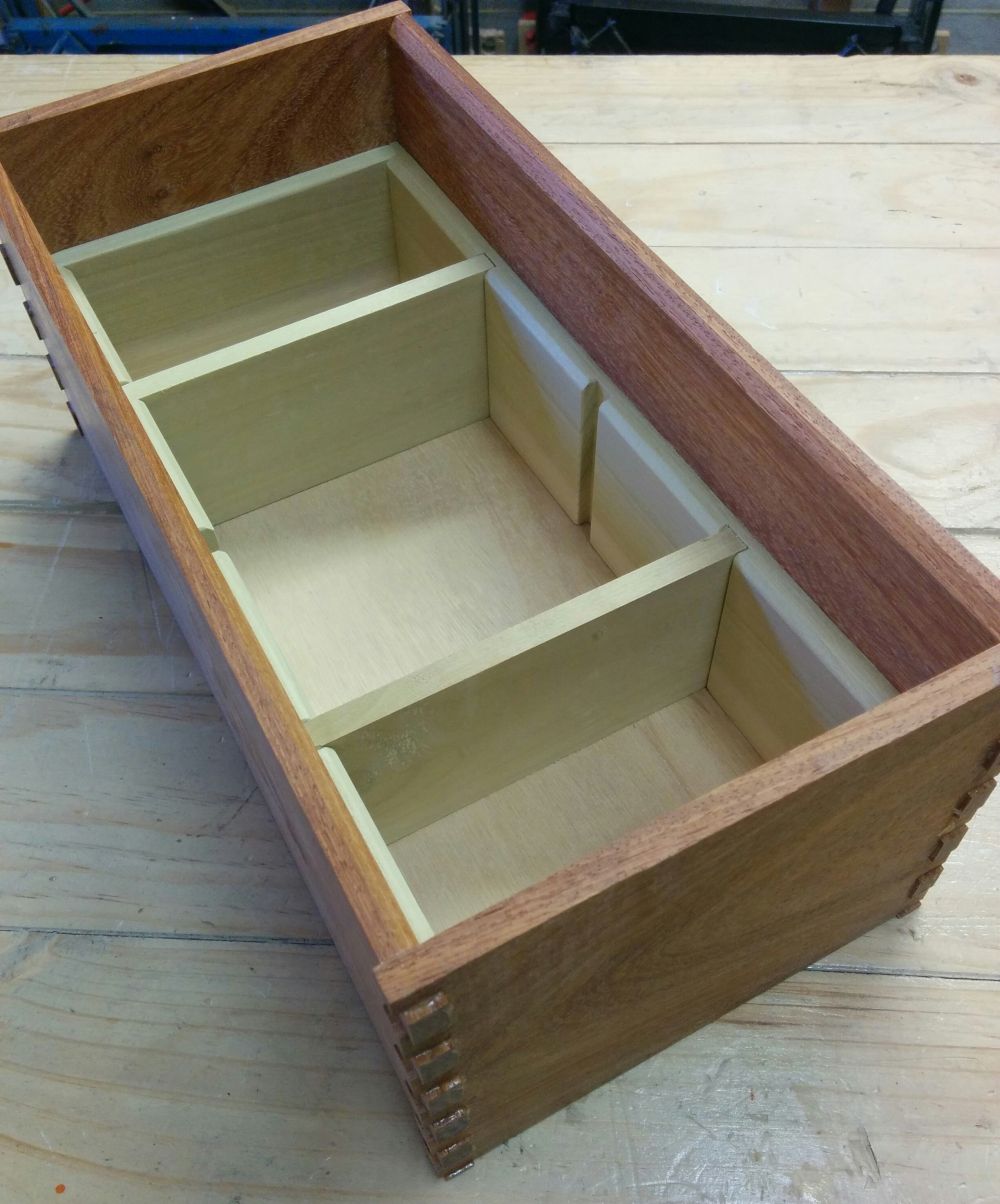
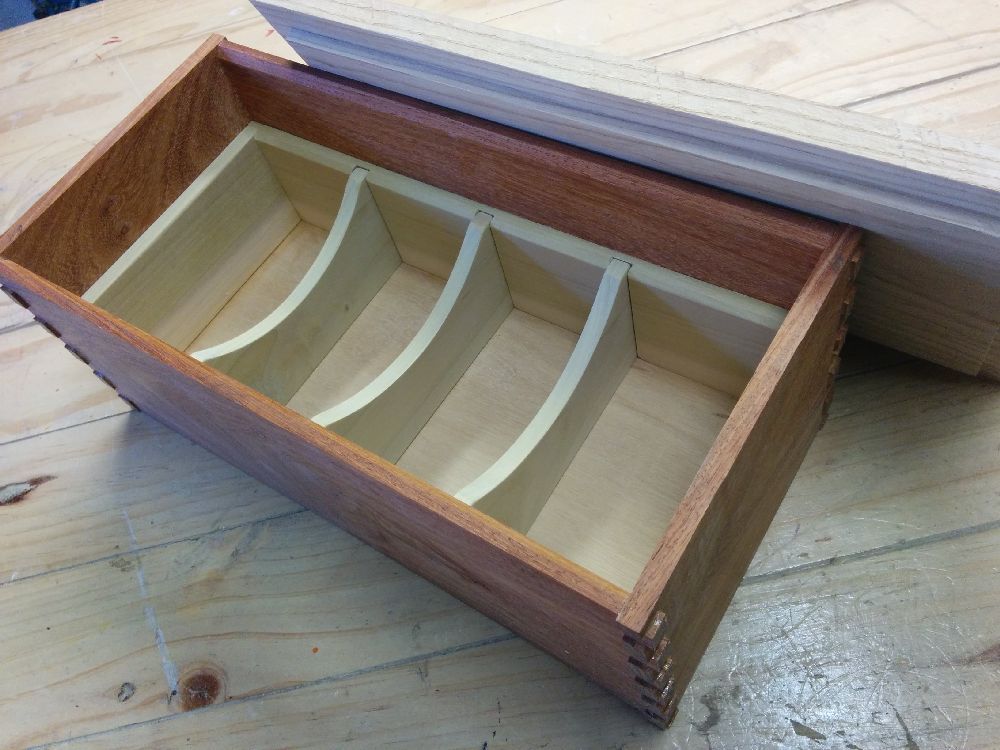
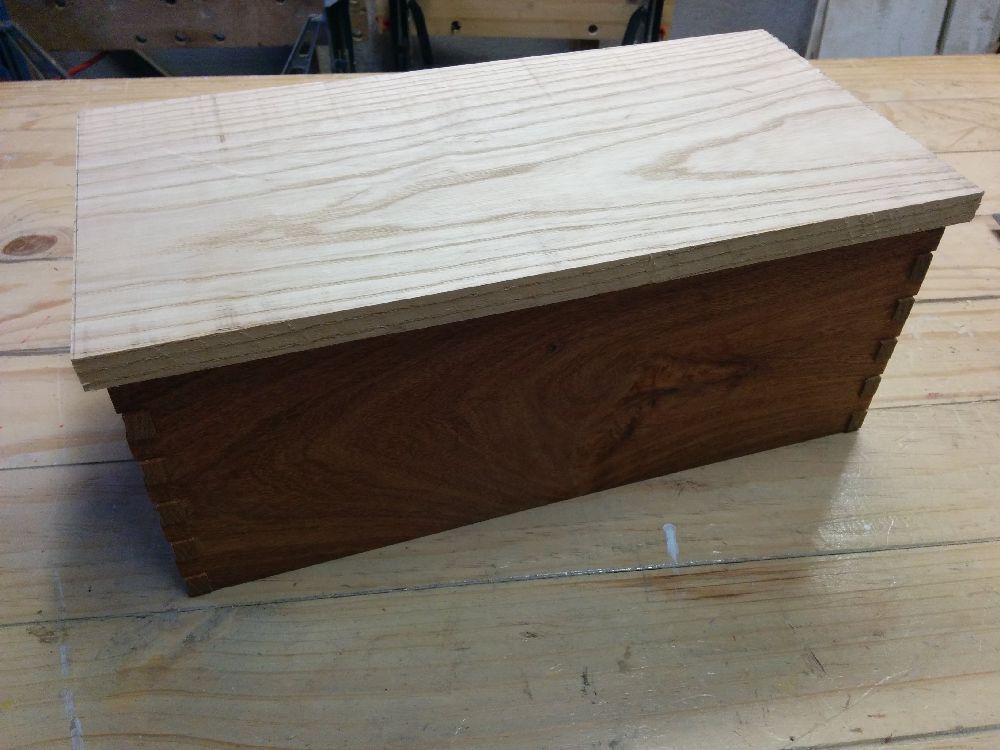
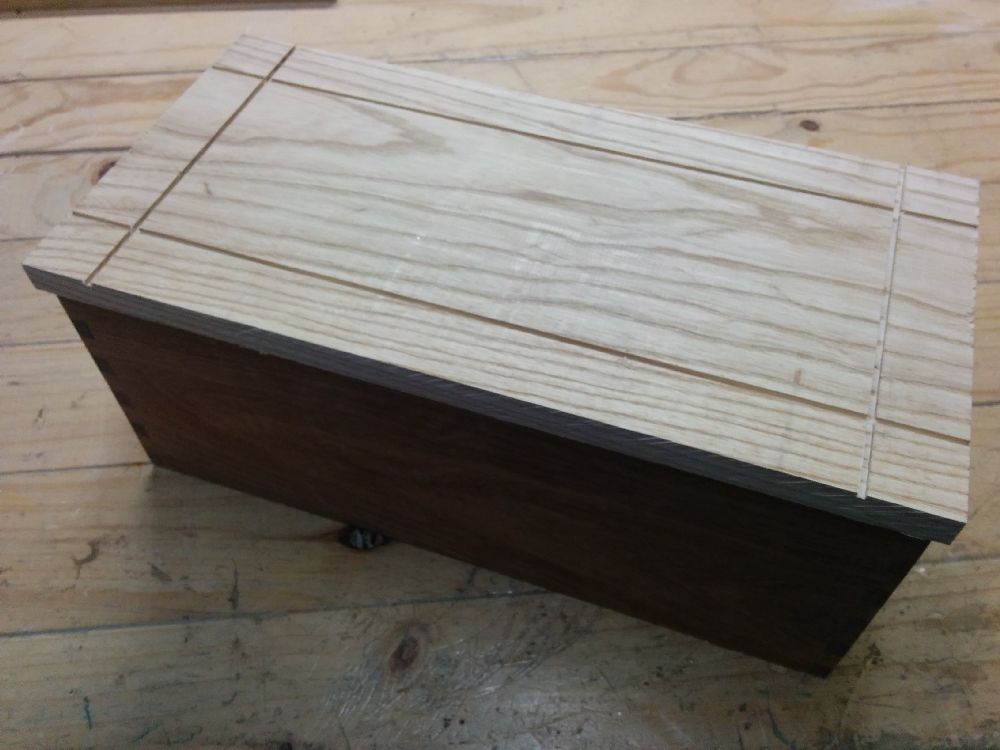
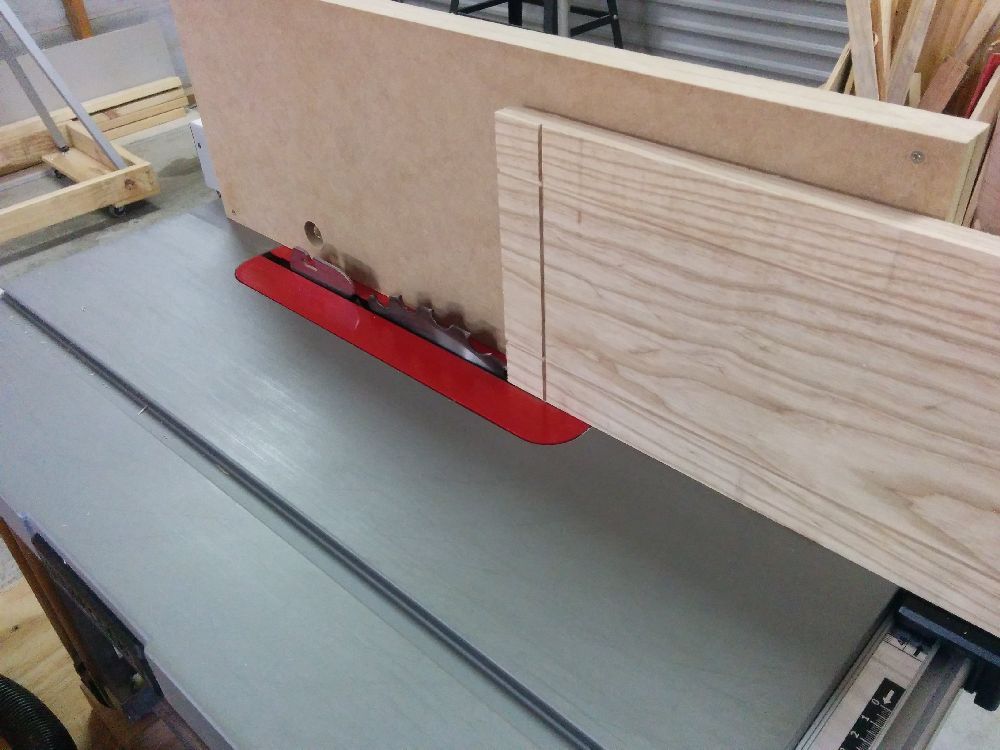
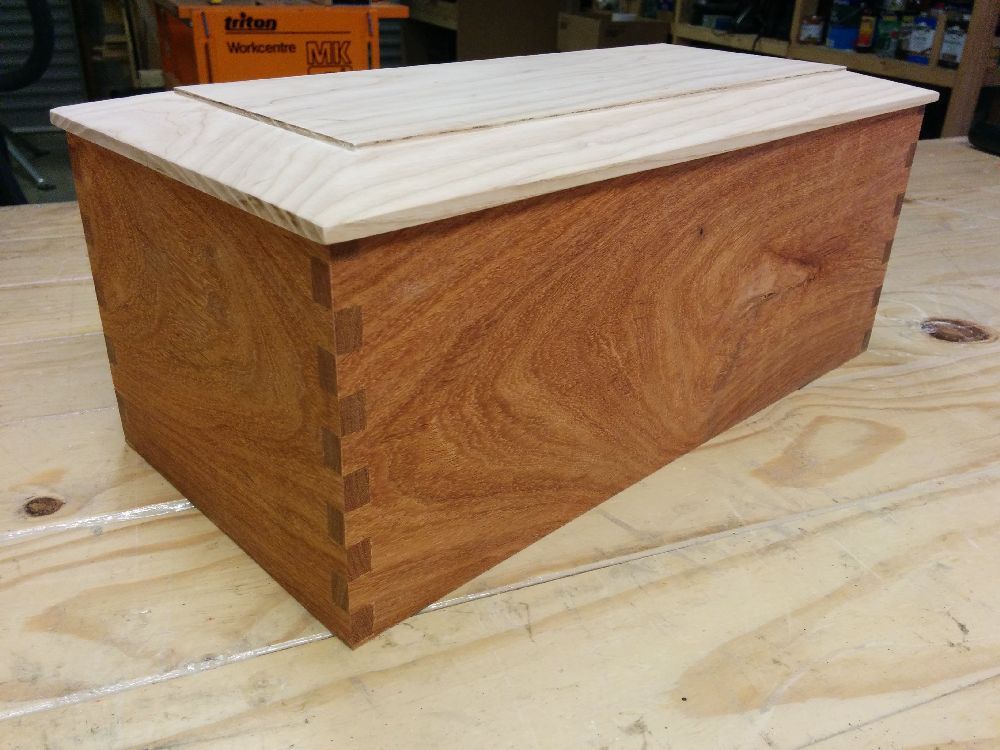
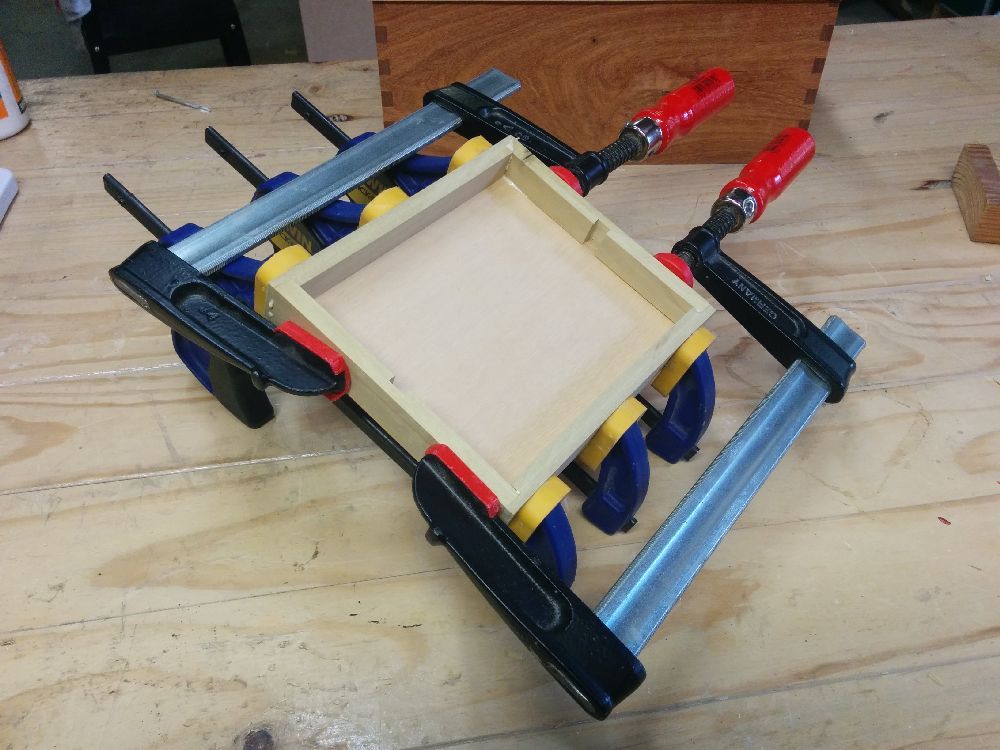
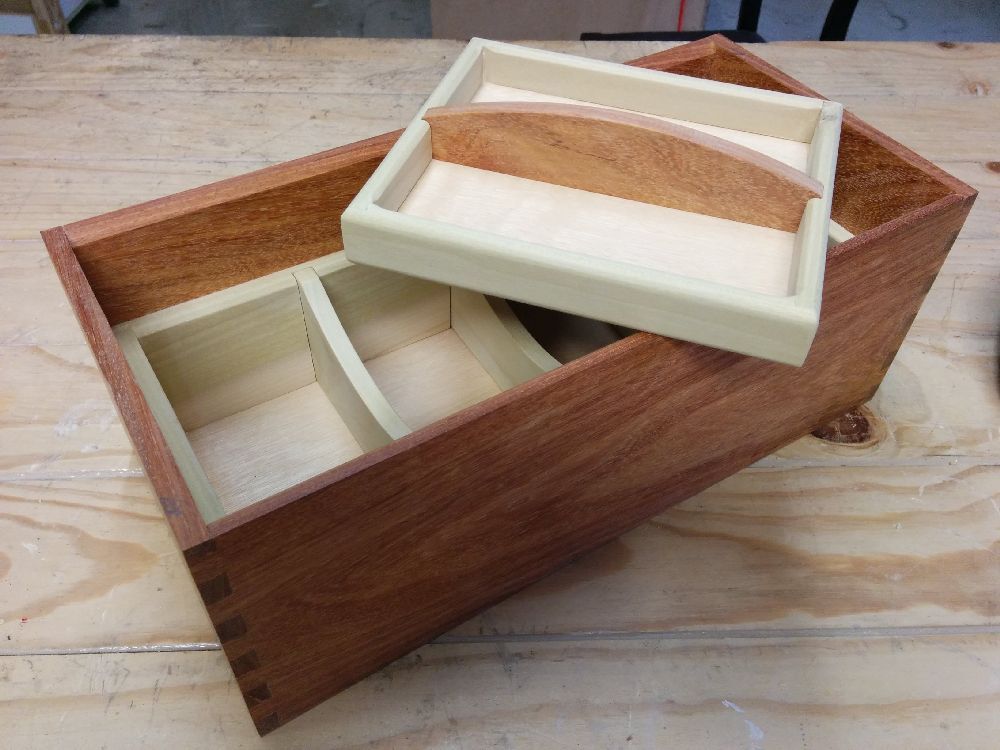
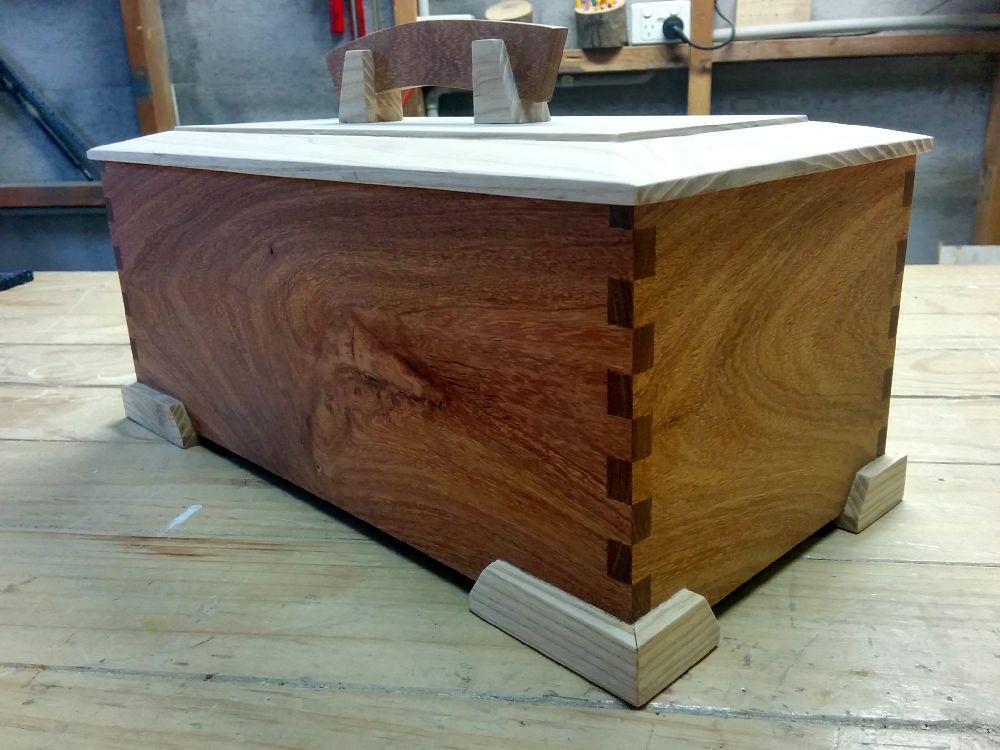
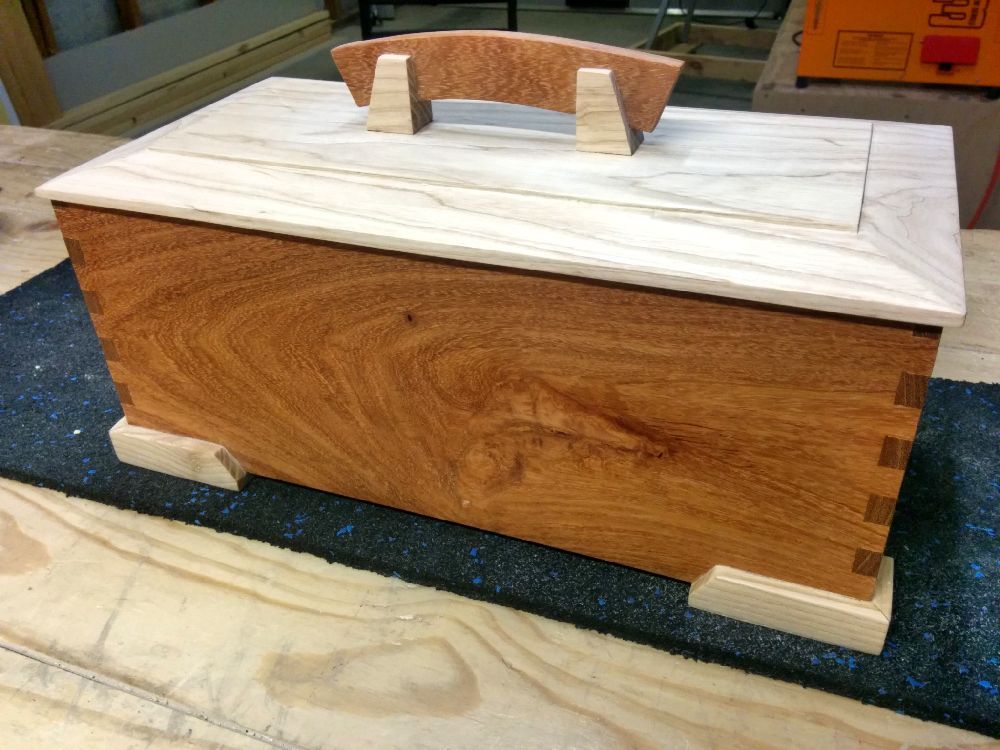
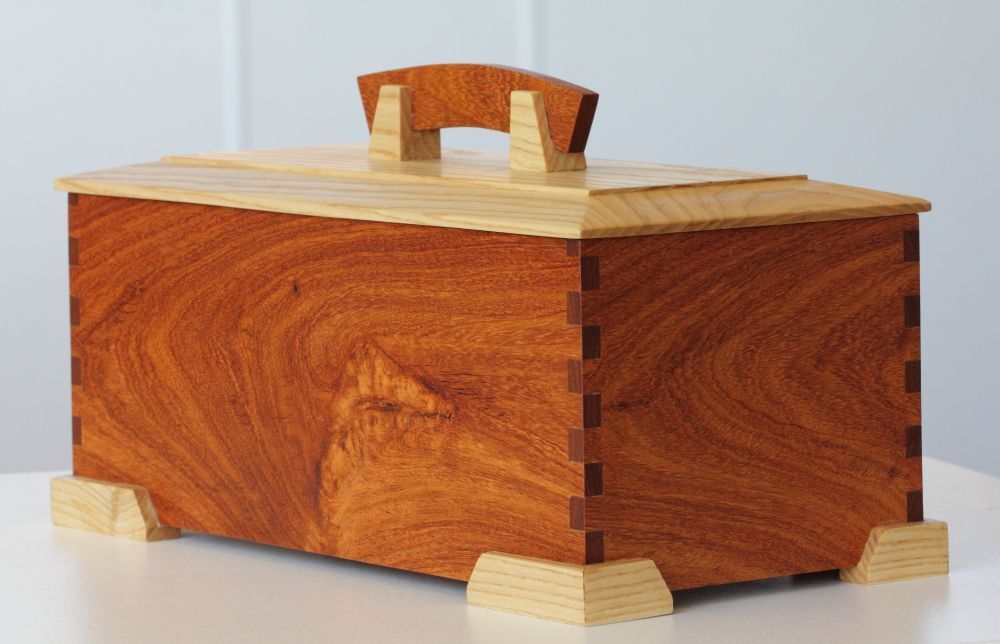



Por lo que veo es un trabajo genial y muy profesional , ya me gustaría a mi poder hacerlo con la misma perfección.
Gracias!
بسیار خوب